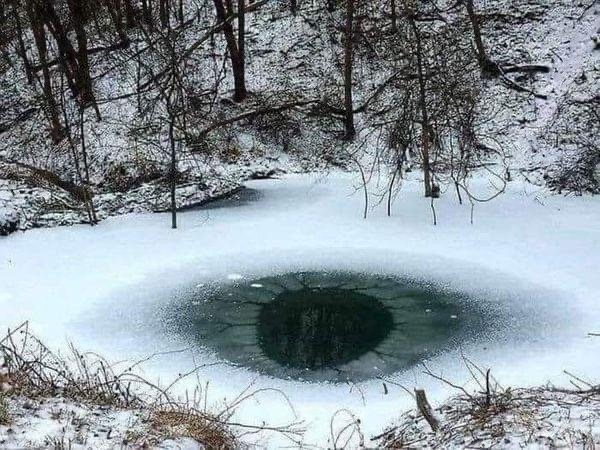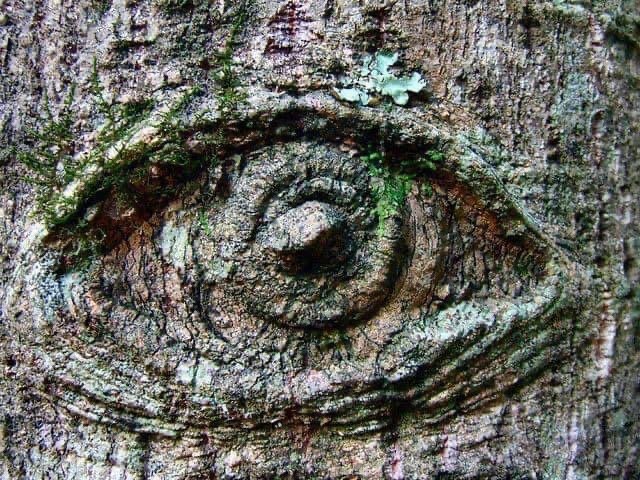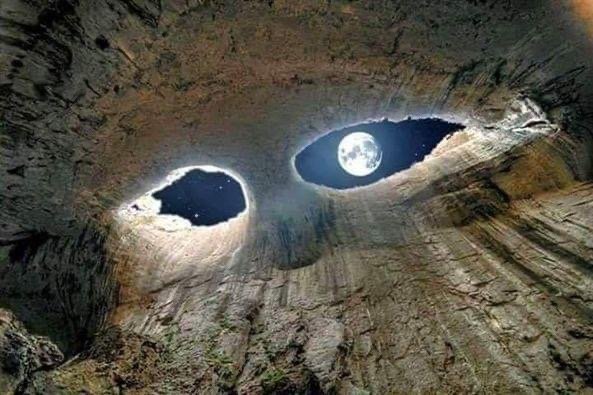🌍 Nature’s Gaze: Stunning Natural Landscapes That Resemble the Human Eye
“From Croatia’s emerald Green Lake to Iceland’s fiery Kerið crater, explore 7 natural wonders that eerily resemble the human eye—complete with travel tips, symbolism, and drone photography guidance.”
Introduction
Have you ever looked at a satellite image or aerial photograph and thought, “That looks like an eye staring back at me”? You’re not alone. The world is filled with surreal and astonishing places, but some natural wonders take it to another level—looking just like the human eye.
Let’s dive into the most awe-inspiring eye-shaped landscapes across the planet, where nature seems to peer right back at us.
#01

🟢 The Green Lake, Croatia – A Living Iris
Where It’s Located
Tucked away in the heart of Croatia, Green Lake is a hidden gem surrounded by thick greenery and rolling hills. It’s not far from the picturesque town of Imotski.
What Makes It Eye-Like
When viewed from above, Green Lake stuns with its perfect oval shape, deep emerald hue, and mirror-like surface. The forest that rings the lake acts like natural lashes and lids. The center? A deep iris of crystalline water.
Ecosystem and Wildlife
This lake isn’t just pretty—it’s alive. Birds chirp from the treetops while fish dart through the waters below. It’s a vibrant ecosystem with perfect balance.
Tourist Experiences
Many visitors say standing by the shore feels like looking into a calm, sentient eye. Photographers, hikers, and meditation lovers all find something soulful here.
#02

🌋 Kerið Crater Lake, Iceland – The Fiery Blue Eye
The Volcanic Origins
Kerið was born from a volcanic eruption over 3,000 years ago. The result? A circular crater now filled with shockingly blue water.
Vivid Colors and Natural Contrast
The surrounding red volcanic rock gives Kerið an otherworldly look. The blue water surrounded by red walls mimics an iris with blood vessels—a fiery gaze from Mother Nature herself.
Geological Significance
This site is a key point on Iceland’s Golden Circle and offers insight into the island’s explosive past.
Visiting Tips
Best viewed at sunrise or sunset for maximum color contrast. Wear good shoes—the slope down to the lake can be slippery.
💧 The Blue Eye, Estonia – A Hidden Gem
Location and Accessibility
Deep in Estonia’s woodlands lies the Blue Eye. It’s not as well-known, making it a peaceful retreat for adventurers seeking calm.
The Surrounding Forest Frame
This lake gets its name from the electric-blue hue that shimmers in direct sunlight. Trees crowd its edges, making it appear even more like a real eye socket.
A Peaceful Spot for Wildlife
Birds, bugs, amphibians—you name it. They’ve found a home here. It’s nature’s eye and a haven for creatures.
Photographic Opportunities
Bring your drone. Overhead shots show just how precisely this lake mimics a human eye. It’s Instagram gold.
🔵 Crater Lake, Oregon – Nature’s Deepest Gaze
How It Formed
Another volcanic marvel, Crater Lake formed inside a caldera after Mount Mazama erupted about 7,700 years ago.
The Eye-Like Appearance from Above
With impossibly deep blue waters and Wizard Island forming a dark “pupil,” this lake is America’s most mesmerizing eye-like feature.
Activities and Wildlife
You can hike, boat, or just gaze. The clarity of the water is unmatched, and the ecosystem thrives with unique species.
Preserving the Natural Beauty
It’s a protected National Park, so always follow Leave No Trace principles when visiting.
#03

🌐 Other Remarkable Eye-Shaped Landscapes Around the World
Eye of the Sahara, Mauritania
Also called the Richat Structure, this massive formation in the Sahara looks like a gigantic eye when viewed from space. It’s 30 miles wide and shrouded in mystery.
Lake Rakshastal, Tibet
This sacred and eerie lake has a pupil-like island in its center. It’s often seen as a spiritual symbol of watchfulness.
Laguna Colorada, Bolivia
Reddish water, white shores, and dark islands create an eye-like scene in this high-altitude lake, often visited by flamingos.
#04

🔮 Symbolism and Meaning Behind Eye-Shaped Landscapes
The Human Eye as a Symbol
Across cultures, the eye represents vision, clarity, protection, and the soul. These landscapes mirror those deeper meanings.
Cultural Interpretations
From the “evil eye” amulets in the Mediterranean to the all-seeing eyes in ancient Egypt, the eye has always been powerful in symbolism—and now, in nature.
#05

🧠 The Connection Between Nature and Human Perception
Pareidolia and Visual Recognition
Pareidolia is when we see familiar shapes in clouds, rocks, or… lakes. Our brains love to find patterns, especially ones as familiar as eyes.
Nature Imitating Art – Or the Other Way Around?
These landscapes raise an interesting question: Did nature form them randomly, or is our perception tuned to find deeper meaning in them?
#06

❤️ Why These Natural Wonders Captivate Us
The Power of Patterns
There’s something universal about symmetry and shapes. A lake that looks like an eye? That’s nature’s geometry at work.
Reflections of the Soul in Nature
These places make us feel seen, as if the Earth is looking back, reminding us we’re part of something bigger.
🌿 Eco-Tourism and Responsible Travel
How to Explore Without Harming
Stay on trails, don’t litter, and respect wildlife. These places are rare and fragile.
Respecting Fragile Ecosystems
Don’t disturb the flora or fauna. Take pictures, not souvenirs.
📷 Tips for Photographing Eye-Shaped Landscapes
Best Angles and Lighting
Go for high views—drones are ideal. Early morning or golden hour light brings out the most detail.
Equipment You’ll Need
Wide-angle lenses, ND filters, and a drone for overhead shots. Waterproof gear helps too.
Sharing Ethically on Social Media
Tag locations responsibly, avoid geo-tagging sensitive spots, and encourage eco-conscious tourism.
🧘 Creating Deeper Connections with Nature
Mindful Travel Practices
Slow down. Breathe. Soak in the beauty. Nature’s eye-shaped wonders aren’t just photo ops—they’re soul food.
How These Places Inspire Reflection
Much like staring into someone’s eyes, these landscapes evoke introspection, wonder, and peace.
✅ Advantages and Disadvantages of Visiting Eye-Shaped Landscapes
🌟 Advantages
-
Unique Visual Experience
-
These locations offer breathtaking views that mimic the human eye — a surreal experience not found in typical tourist spots.
-
-
Perfect for Photography and Drones
-
Aerial shots, especially via drones, create stunning, sharable content ideal for Instagram, travel blogs, or photography portfolios.
-
-
Connection with Nature and Symbolism
-
These landscapes evoke emotional and spiritual responses, often reflecting deeper human meaning through natural design.
-
-
Less Crowded (Some Locations)
-
Unlike popular landmarks, places like Estonia’s Blue Eye or Tibet’s Lake Rakshastal are relatively secluded, providing peaceful exploration.
-
-
Educational and Geologically Significant
-
Visitors learn about geological formations like craters and volcanic lakes, making the trip enriching as well as scenic.
-
⚠️ Disadvantages
-
Accessibility Challenges
-
Many eye-shaped landscapes are in remote or rugged areas. Some require long hikes or off-road travel, limiting access for less mobile travelers.
-
-
Weather-Dependent Visibility
-
Overhead resemblance to an eye is often best seen in clear weather or from aerial views. Cloudy skies or seasonal changes may obscure the shape.
-
-
Environmental Fragility
-
These ecosystems are sensitive to human activity. Increased tourism can harm natural habitats if not managed responsibly.
-
-
Limited On-Site Facilities
-
Some locations lack tourist infrastructure like restrooms, guides, or food services, requiring advanced planning and self-sufficiency.
-
-
Drone Restrictions
-
While drones offer the best perspective, they may be restricted or banned in national parks or protected areas (e.g., Crater Lake, Oregon).
-
🔚 Conclusion
Nature never stops amazing us, and landscapes that resemble the human eye are proof of its whimsical artistry. From Croatia’s Green Lake to the fiery beauty of Iceland’s Kerið, and the quiet shimmer of Estonia’s Blue Eye to Oregon’s majestic Crater Lake—each location invites us to see, feel, and connect on a deeper level. As we explore these eye-shaped wonders, we’re reminded that nature sees us too—and sometimes, it reflects us more than we realize.
❓ FAQs
1. What causes natural landscapes to resemble eyes?
Natural erosion, volcanic activity, mineral deposits, and vegetation patterns can combine to create shapes that resemble human eyes, especially when seen from above.
2. Can these places be seen on satellite images?
Yes! Platforms like Google Earth provide stunning satellite views of these eye-shaped landscapes.
3. Are there guided tours to these locations?
Absolutely. Many of these sites, especially Kerið and Crater Lake, offer guided experiences through local tour providers.
4. What’s the best season to visit these spots?
Spring to early autumn is best for most, but always check local conditions. For Iceland, summer provides the best visibility and access.
5. How do I find more landscapes like this?
Use tools like Google Earth, travel forums, and hashtags on Instagram such as #EyeOfNature or #AerialWonders to discover similar hidden gems.
6. Why do some natural landscapes resemble human features?
This is often due to a psychological phenomenon called pareidolia, where our brains interpret patterns in nature—like lakes, mountains, or clouds—as familiar shapes such as faces or eyes.
7. What’s the best time of day to photograph eye-shaped landscapes?
Early morning or late afternoon—known as golden hour—offers soft lighting and long shadows, which enhance the visual resemblance of these landscapes to a human eye, especially in drone footage.
8. Are drones allowed in all of these locations?
No. While drones offer the best aerial perspective, some sites like national parks (e.g., Crater Lake in the U.S.) have restrictions. Always check local laws and obtain necessary permits before flying.
9. How can I tell if a location is truly eye-shaped from above?
Use Google Earth or drone footage to verify the shape. Many of these formations are only recognizable as eye-shaped when viewed from a high altitude.
10. Can I visit these places year-round?
Not always. Seasonal accessibility depends on location. For instance, Iceland’s Kerið Crater is best seen in summer, while Tibetan lakes may be inaccessible during heavy snowfall or monsoon seasons.
#07

#08

#09




